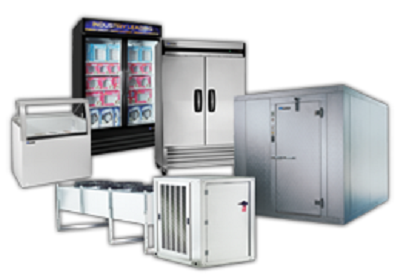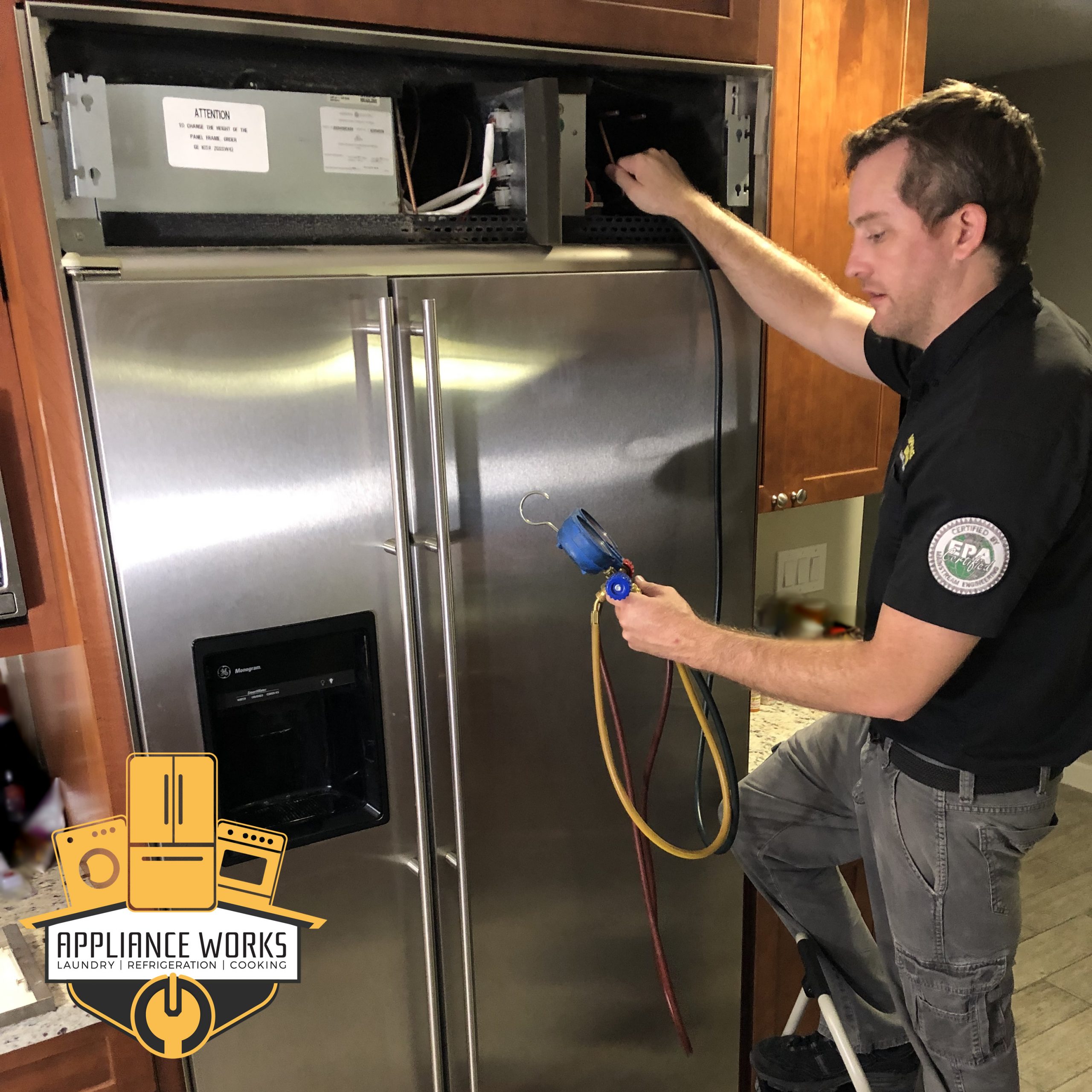Important Tips for Effective Ref Repair Service to Prolong Home Appliance Lifespan
When it comes to your refrigerator, appropriate repair work and maintenance are crucial for durability. Comprehending typical problems and knowing when to act can make all the difference.
Recognizing Usual Fridge Issues
Refrigerators are essential in keeping your food fresh, but they can run into a range of usual troubles that disrupt their performance. If you observe food spoiling quicker than normal, check the thermostat settings or consider if the door seals are damaged. Identifying these issues early can save you time and money in repairs, ensuring your refrigerator runs efficiently and efficiently.
Routine Upkeep Practices
To keep your appliances running efficiently, you require to remain on top of routine upkeep methods. Tidy the condenser coils, inspect the door seals, and keep track of the temperature setups to ensure peak efficiency. These basic jobs can conserve you money and time on repairs down the line.
Tidy Condenser Coils Consistently
Cleaning your condenser coils on a regular basis can significantly boost your appliance's performance. Dust and dust build up on these coils over time, creating your appliance to function more difficult and eat even more power. To keep them clean, disconnect your home appliance and carefully get rid of any safety covers.
Inspect Door Seals
3 easy steps can aid you assure your appliance's door seals are in great problem. Examine the seals on a regular basis for any kind of splits, tears, or signs of wear. These damages can result in air leaks, affecting effectiveness. Second, clean the seals utilizing warm, soapy water to eliminate any kind of particles or crud. A tidy seal assures a limited fit and far better efficiency. Perform a simple test by shutting the door on an item of paper. If you can quickly pull it out without resistance, the seal may need replacing. By following these actions, you'll keep your appliance's efficiency and longevity, saving you cash on power costs and repair work over time.
Display Temperature Level Settings
Consistently checking your appliance's temperature level settings is essential for ideal performance and efficiency. Whether you're dealing with a fridge, freezer, or stove, watching on these setups can stop numerous concerns. For refrigerators, aim for temperature levels between 35 ° F and 38 ° F; for fridges freezer, remain 0 ° F. If the temperature levels are as well high or low, your device may function harder, wasting power and shortening its life-span. Use a thermostat to check these setups frequently, specifically after major adjustments, like moving your home appliance or adjusting the thermostat. If you discover variations, change the settings appropriately and speak with the customer handbook for advice. By remaining positive regarding temperature level monitoring, you'll ensure your appliances run smoothly and last longer.
Troubleshooting Cooling Issues
When your refrigerator isn't cooling appropriately, it can bring about ruined food and threw away cash, so dealing with the problem quickly is vital. Beginning by examining the temperature level setups to validate they go to the advised degrees, normally around 37 ° F for the refrigerator and 0 ° F for the freezer. If the settings are appropriate, examine the door seals for any type of gaps or damage; a faulty seal can allow cozy air to enter.
Next, examine the vents inside the refrigerator and fridge freezer. Confirm they're not obstructed by food items, as this can interfere with air movement. Pay attention for the compressor; if it's not running or making uncommon sounds, it may need attention. Finally, examine the condenser coils, generally situated at the back or bottom of the unit. Dirt and debris can build up, causing cooling down problems. Clean them with a vacuum cleaner or brush to enhance performance. If troubles linger, it may be time to call a professional.
Taking Care Of Water Leakage and Ice Accumulation
If you're taking care of water leakage or ice accumulation in your appliance, it's important to identify the source of the trouble. By pinpointing where the water is coming from, you can prevent further issues and avoid expensive repair services. Let's explore some effective techniques to deal with these typical problems.
Identify Leak Sources
How can you successfully recognize the sources of water leakage and ice accumulation in your appliances? Start by checking the seals and gaskets on your fridge and freezer doors. A worn or damaged seal can permit warm air to go into, triggering condensation and ice. Next, inspect the drain frying pan and drain system for clogs or clogs; a backed-up drain can result in water pooling. Try to find any type of loosened links in the water supply line, which can produce leakages. Examine the defrost drain for ice accumulation, which can disrupt appropriate drain. By systematically inspecting these locations, you'll identify the resource of the trouble, allowing you to take the required steps to repair it and prolong your home appliance's lifespan.
Protect Against Ice Development
To stop ice formation in your home appliances, begin by confirming the temperature level setups are proper. If your refrigerator or freezer is also cool, it can bring about excessive ice accumulation. Check the door seals consistently; harmed seals can allow cozy air in, causing condensation and ice development.
Maintain the device well-ventilated and stay clear of congestion, as this can obstruct airflow - Who Repairs Dryers in Oro Valley? Dependable Refrigeration & Appliance Repair Service. Routinely defrost your fridge freezer if it doesn't have an automatic defrost attribute.
If you discover water leakage, identify and deal with any kind of obstructed drainage holes, as they can add to ice accumulation. Finally, clean the coils and verify they're working effectively to maintain peak efficiency. Taking these steps will help extend your device's lifespan and performance.
Dealing With Noisy Fridge Sounds
While it could appear startling, a loud fridge typically indicates minor concerns instead of significant malfunctions. Recognize the source of the sound. Common perpetrators consist of the compressor, fans, and water lines. If you hear a buzzing noise, it may be the compressor striving; this could simply be a normal procedure noise. a to z appliance repair
Following, look for loose items inside. In some cases, containers or shelves can rattle, developing undesirable noise. Tighten up or reposition them to get rid of the noises.
If you observe a clicking noise, it may be the defrost timer. This is normally safe yet can show it requires inspection.
Lastly, confirm your fridge is degree. An out of balance appliance can create resonances and sound. Make use of a level to check, and readjust the feet if required. Resolving these problems immediately can help maintain your refrigerator's efficiency and lengthen its life-span.
When to Replace Parts vs. Full Replacement

Nonetheless, if your device is older and experiencing numerous problems, a full replacement can be much more economical. Consider the cost of repairs versus the appliance's value. If repair work exceed 50% of a brand-new unit's price, it's usually better to purchase a substitute. Furthermore, if you discover recurring troubles that keep recurring, it's an indicator that your device has reached the end of its life. Evaluate these aspects very carefully to make the most effective decision for your needs and spending plan.
Knowing When to Call a Professional
Just how can you inform when it's time to call in a specialist for home appliance repair service? If your home appliance stops working altogether or frequently journeys circuit breakers, it's one more red flag.
You should additionally consider your very own comfort level with repairs. If you're unclear regarding detecting the trouble or do not have read this post here the right tools, it's best to reach out for aid. Bear in mind, attempting challenging repairs can result in even more damages and even safety and security risks.

Often Asked Inquiries
Just how Commonly Should I Clean the Refrigerator Coils?
You need to clean your fridge coils every 6 months. This aids preserve effectiveness and protects against getting too hot. If you observe excessive dust or pet dog hair, tidy them extra regularly to guarantee your More Bonuses refrigerator runs efficiently.

Can I Make Use Of Vinegar for Cleansing My Refrigerator?
Yes, you can make use of vinegar to cleanse your refrigerator! It's an excellent natural cleanser that removes smells and discolorations. Best Appliance Repair Near You Dependable Refrigeration & Appliance Repair Service. Just mix it with water, apply it to surface areas, and clean down for a fresh, clean fridge
What Temperature Should My Refrigerator Be Set To?
You should establish your fridge to 37 ° F(3 ° C) for ideal food preservation. This temperature level maintains your food fresh while avoiding putridity, guaranteeing your groceries last longer and reducing waste. It's a simple change you can make!
Does a Fridge Need to Be Leveled?
Yes, your fridge needs to be leveled. If it's uneven, it can affect cooling down effectiveness and cause excess sound. Check the progressing legs and change them to ensure appropriate equilibrium for excellent performance.
Exactly How Can I Reduce Fridge Energy Usage?
To reduce your refrigerator's power usage, keep it clean and well-ventilated, examine door seals for leakages, established the temperature level between 35-38 ° F, and prevent overloading it. These actions can considerably reduce your power costs.